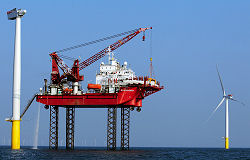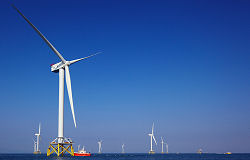
Welcome to The Crown Estate


As managers of the seabed out to the 12 nm limit, we play a major role in the development of the offshore wind energy industry in the UK.
The burgeoning offshore wind industry is set to become a major UK manufacturing activity, bringing significant new inward investment, businesses and jobs. To help make sure this industry realises its full potential, we are taking a proactive approach. This can range from engaging with statutory and non-statutory bodies, regulators, trade associations, local and national governments and representatives of the shipping, aviation and fisheries industries, to holding supply chain events for both offshore wind and wave and tidal projects.
Since 2000, we have run six rounds of offshore wind which have increased in scale and technical complexity as the industry has developed. Leases for projects and programmes are associated with waters around England, Wales, Scotland and Northern Ireland.
Encouraging this new industry is a key component of The Crown Estate strategy, and we have seen exponential growth in activity.
By supporting developers as they harness the potential of offshore wind through some of the largest infrastructure projects in the world, this can provide valuable jobs to local communities as well as underpin the Government's commitment to renewable energy and a reduction in CO2 levels, as well as an increase in energy security.
We have already committed over £100 million in order to help develop offshore wind projects. We fund, and otherwise support, a huge range of initiatives, from undertaking expensive but very important surveys of the mammal and bird populations to identifying the skills gap and careers opportunities in marine renewable energy. The results of this work are made freely available to existing and potential developers and, where possible, to the general public.
Our approach has been endorsed by a report from Ernst & Young which found that from an investor perspective, the UK is the most attractive country in the world for offshore wind development. This conclusion is further endorsed by the interest of major global players throughout the supply chain.